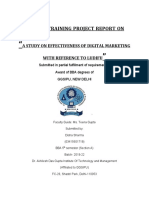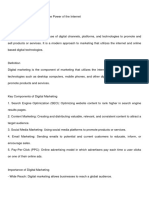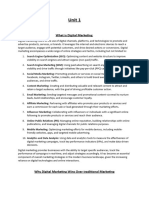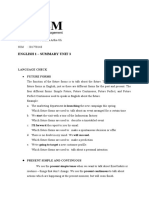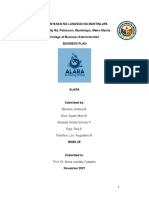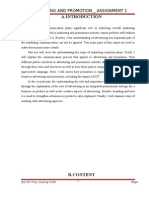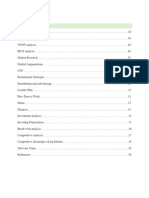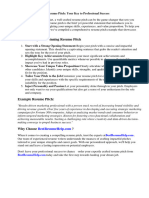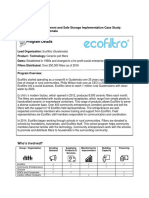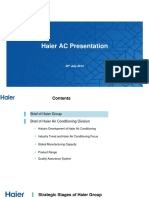Introduction
Digital marketing refers to the use of digital channels, platforms, and technologies to promote
and advertise products or services to a specific audience. Unlike traditional marketing methods,
digital marketing focuses on reaching consumers through online platforms such as search
engines, social media, websites, email, and mobile apps. This shift to digital has revolutionised
how businesses communicate with their customers, enabling a more direct, personalised, and
measurable approach to marketing.
The core principle of digital marketing is its ability to leverage the vast amount of data available
online to target and engage customers more effectively than ever before. Through digital
marketing, businesses can reach consumers on their smartphones, computers, and other
connected devices, allowing for continuous interaction and engagement.
The evolution of digital marketing has been driven by technological advancements and changes
in consumer behaviour. With the internet and mobile technologies becoming integral to daily
life, people now spend more time online, engaging with content, shopping, and interacting with
brands through digital channels. This has opened up new opportunities for businesses to not
only reach a global audience but also tailor their messages to specific demographics, interests,
and behaviours.
Digital marketing includes a variety of techniques and practices, such as Search Engine
Optimisation (SEO), Pay-Per-Click (PPC) advertising, Content Marketing, Social Media
Marketing, Email Marketing, Affiliate Marketing, and Influencer Marketing. Each of these
strategies has its own unique advantages and allows businesses to engage with their target
audience in different ways, from organic content creation to paid ads, to influencer
collaborations.
One of the key features of digital marketing is its measurability. Unlike traditional marketing,
where it's often difficult to gauge the effectiveness of campaigns, digital marketing offers tools
that enable businesses to track the performance of every campaign in real time. This means
businesses can analyse metrics such as website traffic, click-through rates, conversion rates,
and customer engagement, and then adjust their strategies as needed to improve results.
In addition to reaching a global audience, digital marketing is cost-effective, making it
accessible to businesses of all sizes. It allows small businesses and startups to compete with
larger, more established companies by offering affordable tools and platforms to market their
products or services.
1
�Advantages of Digital Marketing
Global Reach: Digital marketing enables businesses to reach a global audience. Whether
you're a small startup or a large corporation, you can target customers anywhere in the world,
which was often impossible with traditional marketing.
Cost-Effective: Digital marketing is typically more affordable than traditional marketing
methods. Small businesses with limited budgets can still run effective digital marketing
campaigns on platforms like social media, email, and search engines.
Measurable Results: One of the key advantages of digital marketing is the ability to track
and measure the effectiveness of campaigns in real time. Using analytics tools, businesses can
see exactly how many people viewed their ads, clicked on links, or made purchases.
Targeted Marketing: Digital marketing allows for highly targeted campaigns. You can
segment your audience based on demographic information (age, gender, location), behavioural
patterns (interests, past purchases), or psychographic data (values, lifestyle). This allows
businesses to focus on the most relevant audiences.
Interactivity: Digital marketing allows for two-way communication between businesses
and consumers. Through comments, social media posts, and direct messaging, businesses can
engage with their customers and get instant feedback.
Personalisation: Personalised experiences are possible with digital marketing. By
collecting data on user preferences and behaviours, businesses can send personalised messages,
recommendations, and offers to their customers, increasing the likelihood of conversion.
Flexibility: Digital marketing campaigns can be easily adjusted in real-time. If a strategy
isn’t working, businesses can quickly tweak their approach or change the messaging, making
digital marketing campaigns more adaptable.
2
�Disadvantages of Digital Marketing
High Competition: Because digital marketing is accessible to nearly everyone, the level of
competition can be intense. Businesses have to constantly innovate to stand out among a sea
of competitors, especially on platforms like Google and social media.
Requires Technical Expertise: Digital marketing involves understanding complex tools,
platforms, and strategies, which may require specialised skills or hiring experts. SEO, content
creation, PPC management, and data analysis require significant expertise.
Dependence on Technology: Digital marketing heavily relies on the internet and digital
tools. If there’s a technical failure, an internet outage, or a platform’s algorithm changes,
businesses may experience disruptions in their campaigns.
Over Saturation: Consumers are bombarded with a constant stream of digital content, ads,
and promotions. This over-saturation can lead to “ad fatigue,” where customers tune out or
ignore marketing messages altogether.
Privacy Concerns: Digital marketing often involves collecting data on consumer
behaviours, preferences, and personal information. This has raised privacy concerns, and
businesses must ensure they are transparent about how they collect and use this data, as well
as comply with data protection regulations like GDPR.
Changing Algorithms: Search engines and social media platforms constantly update their
algorithms. These changes can affect how businesses reach their audiences and require ongoing
adjustments to strategies.
Brand Reputation Risks: Negative feedback or a viral post criticising a product or service
can spread quickly on social media and the internet, damaging a brand’s reputation. Managing
online reputation can be challenging and requires constant monitoring.
3
� Objectives
i) To study and understand digital marketing platforms.
ii) To develop an advertisement using digital tools.
iii) To analyse the response received on used digital platforms (Instagram
& YouTube)
4
� Scope of The Study
i. This study helps to understand the promotional strategies.
ii. This study helps to gain knowledge about Digital Marketing.
iii. This study helps to understand how to attract consumers
iv. This study helps to know how to increase Customer reach
5
� Limitations of the Study
i. Time-constraint is one of the common limitations of the study.
ii. Conclusions are based on data-analysis and interpretations.
iii. Inexperience with digital marketing tools and analytics.
iv. Limited budget and access to premium tools or platforms.
6
�Procedure to Create and Upload
Instagram as a Marketing Platform.
1. Instagram Marketing Strategies
A. Organic Marketing
Content Types: Reels, Stories, IGTV, Carousels, Static Posts
Hashtag Strategy: Niche hashtags, trending hashtags (#TBT, #OOTD)
Engagement Techniques: Polls, Q&A, Giveaways, User-Generated Content
B. Paid Marketing
Instagram Ads: Feed ads, Story ads, Carousel ads, Reels ads
Influencer Collaborations: Micro vs. macro influencers
Affiliate & Referral Marketing
C. Instagram Shopping & E-Commerce
Instagram Shops, Product Tags, Shoppable Stories
2. Consumer Behaviour & Engagement
How users interact with different content formats
Factors influencing engagement & conversion rate.
3. Performance Measurement & Analytics
Instagram Insights (Reach, Impressions, Engagement Rate, Follower Growth)
Third-party analytics tools: Hoot-suite, Sprout Social.
4. Challenges & Future Trends
Algorithm changes affecting reach
Rise of Reels & competition with TikTok
AI & automation in Instagram marketing
7
�YouTube As A Marketing Platform.
1. YouTube Marketing Strategies
A. Organic Marketing
Content Types: Tutorials, Reviews, Explainers, Vlogs
SEO Optimisation: Keywords, Titles, Descriptions, Tags
Community Engagement: Comments, Polls, YouTube Shorts
B. Paid Marketing
YouTube Ads: Skippable, Non-skippable, Bumper Ads, Display Ads
Influencer & Brand Collaborations
Affiliate & Sponsorship Deals
2. Consumer Behaviour & Engagement
Importance of watch time & audience retention
Factors influencing click-through rates & subscriptions
3. Performance Measurement & Analytics
YouTube Analytics (Watch Time, Views, Audience Retention, CTR)
Tools: TubeBuddy, VidIQ, Google Analytics
4. Challenges & Future Trends
Monetisation challenges & changing ad policies
Rise of YouTube Shorts & competition with TikTok
AI-driven video recommendations & personalised content
8
�Concerned Product for its Advertisement
Product: Bluetooth Headphones
Brand Name: TuneX
Product Features to Highlight
High-Quality Sound: Deep bass, clear treble, and noise cancellation.
Seamless Connectivity: Bluetooth 5.0+ with fast, stable pairing.
Long Battery Life: Up to 30 hours with fast charging.
Ergonomic & Durable: Lightweight, secure fit, and water-resistant.
Smart Features: Touch controls, voice assistant, and low-latency mode.
2. Target Audience Segmentation
Tech Enthusiasts: People who love the latest gadgets and premium audio quality.
Fitness & Sports Users: Gym-goers, runners, and athletes who need secure, sweat-
proof earbuds.
Commuters & Travellers: Professionals and students who need noise cancellation and
long battery life.
Gamers & Streamers: Users who require low-latency audio for gaming and media
consumption.
Young Professionals & Students: Those who need earbuds for work calls, online
classes, and entertainment.
3. Advertising Strategies
Influencer Marketing: Partner with tech, fitness, and lifestyle influencers for reviews
and promotions.
Social Media Ads: Run targeted video and carousel ads on Instagram, TikTok, and
YouTube.
SEO & Google Ads: Optimise for search terms like “best wireless earbuds” and use
Google Ads.
Retargeting Campaigns: Re-engage visitors who showed interest but didn’t purchase.
In-Store & Brand Collaborations: Offer live demos, discounts, and co-branded
promotions.
4. Effective Content Types
Product Demo Videos – Showcase key features like sound quality, battery life, and
fit.
User Testimonials & Reviews – Share real customer experiences to build trust.
Comparison Content – Highlight advantages over competitors in side-by-side
comparisons.
Lifestyle & Use-Case Visuals – Show earbuds in action during workouts, travel, and
work.
9
�Creating and Uploading Pictures on Instagram
Step 1: Plan Your Content
Choose a high-quality image relevant to your brand (product image, infographic,
lifestyle shot).
Use Canva for professional editing.
Maintain an aspect ratio of 1:1 (square, 1080x1080px) or 4:5 (portrait, 1080x1350px).
Step 2: Upload the Picture
Open the Instagram app → Click on ‘+’ (Create) → Select ‘Post’.
Choose your edited image from the gallery.
Step 3: Optimise the Post
Add a compelling caption (include keywords, call-to-action like “Shop Now” or “DM
for details”).
Use relevant hashtags (e.g., #FashionTrends, #VeganSkincare).
Tag relevant accounts (partners, influencers).
Add location tags for better reach.
Step 4: Post & Engage
Click ‘Share’ to post.
Respond to comments & DMs to increase engagement.
Share on Stories for extra visibility.
10
�Tool to Create Post on Instagram
Canva
Step 1: Define Your Objective
• Goal: Promote TuneX Headphones and highlight features + discount offer.
• Decide on what you want people to do (buy, learn more, etc.)
Step 2: Choose Your Design Platform
• You are using Canva, which is great for social media posts.
• Open Canva and select a template size (Instagram Post, Facebook Ad, etc.). A square post
(1080x1080px) works for most platforms.
Step 3: Add a Background or Product Image
• Use a high-quality image of your product (like the headphones shown).
• Set it as the background or layer it creatively.
Step 4: Add the Product Name/Logo
• Write the product name “TuneX” at the top.
• Use bold, clean fonts.
• Add text effects like glow (as seen in your image).
Step 5: Highlight Key Features
• List top features clearly. Example:
• Water Resistance
• Voice Assistant
• Fast Charging
• Use icons next to each point to make it visually engaging.
Step 6: Add Promotional Offer
• Create a standout badge (like the “Up to 30% Off” circle in the image).
• Use contrasting colors to make the offer pop.
11
�Step 7: Add Call-to-Action (CTA)
• Example: Order Now button.
• Make it clickable-looking, with a bold color.
• Include contact info if relevant (phone, website, etc.).
Step 8: Final Touches
• Adjust alignments, spacing, and balance.
• Use filters to enhance the product photo.
• Keep the design simple, don’t overcrowd.
Step 9: Download and Share
• Once satisfied, click the Download button (top-right arrow icon).
• Choose PNG or JPG for social media.
• Share on your platforms (Instagram, Facebook, etc.)
12
�Creating and Uploading YouTube Shorts (Short Videos)
Step 1: Plan & Shoot Video
Record a high-quality vertical video (9:16 ratio, 1080x1920px).
Keep it under 60 seconds.
Step 2: Edit the Video
Use CapCut, VN, Adobe Premiere Rush, or YouTube’s built-in editor.
Add text overlays, subtitles, and music.
Step 3: Upload to YouTube
Open YouTube app → Tap ‘+’ → Select ‘Create a Short’.
Upload your edited video.
Step 4: Optimise for Views
Add a catchy title with “#Shorts” (e.g., “Best Skincare Hacks! #Shorts”).
Use SEO-friendly descriptions & relevant tags.
Choose an eye-catching thumbnail (or let YouTube auto-generate one).
Step 5: Publish & Engage
Click ‘Upload’.
Respond to comments & share on social media for promotion.
13
�Tool to Create Post on YouTube
Canva
Step 1: Set Up the Design
• Open Canva and search for “YouTube Shorts” (1080x1920 px).
• Select a template that fits your brand or start from scratch.
Step 2: Add Your Product Image
• Click Uploads → Upload your product image.
• Drag and resize it to fit the layout.
Step 3: Create an Engaging Background
• Choose a background that contrasts with your product (e.g., dark blue or yellow as in your
post).
• Add gradients or abstract shapes for a modern feel.
Step 4: Highlight Key Features
• Use bold text or animated text effects to highlight:
• Superior Sound Quality
• Noise Cancellation
• Long Battery Life
• Touch Controls & Water Resistance
• Keep the text short and clear for easy readability.
Step 5: Add a Call-to-Action (CTA)
• Example: “Grab 30% OFF – Order Now!” or “Coming Soon – Stay Tuned!”
• Use an eye-catching font and colour.
14
�Step 6: Include Animations (Optional)
• Click Animate and add text fade-ins, product zoom-ins, or motion effects.
• Keep it dynamic but not overwhelming.
Step 7: Add Music & Final Touches
• Go to Elements → Audio and select a trendy, upbeat track.
• Ensure the video is less than 60 seconds for Shorts.
Step 8: Download & Post
• Click Download → MP4 (recommended for video posts).
• Upload to YouTube Shorts with relevant hashtags (#earbuds #bluetooth #shorts).
15
� Data Analysis and Interpretation
Instagram
The Instagram post received 99 views, with the majority (82.8%) coming from followers
and 17.2% from non-followers. This indicates that the content mainly reached an existing
audience, with limited expansion beyond the current follower base. The source of views was
distributed among home feed (42 views), profile visits (22 views), and other sources (35 views),
suggesting that a significant number of users accessed the post through direct profile visits or
external shares.
Engagement metrics are particularly strong, with 95 total interactions, meaning most viewers
actively engaged with the post. The most dominant interaction type was shares (56), followed
by likes (30), comments (8), and saves (1). The fact that 56% of the interactions were shares
indicates that the content was compelling enough for users to distribute it further.
Additionally, 31 accounts engaged with the post, reinforcing the idea that it resonated well
with the audience. However, despite high engagement, the post reached only 45 accounts,
which suggests a relatively limited discovery beyond followers.
16
� From a profile activity perspective, the post generated 12 profile visits, indicating that it
sparked curiosity among users. This suggests that while the content was engaging, it may not
have been optimised for wider discovery, as a larger reach could have led to even more
profile interactions.
The data suggests that the post was highly engaging among existing followers but lacked
significant exposure to new audiences. The high share count indicates that users found it
valuable, yet the limited reach (only 45 accounts) shows that it did not perform strongly in
Instagram’s algorithm for discovery. This could be due to lack of viral triggers, ineffective
hashtags, or limited external exposure.
To improve reach and attract more non-followers, consider the following:
Leverage Hashtags and Keywords: Using relevant hashtags and captions with
searchable keywords can help Instagram push the post to explore pages and suggested
feeds.
Engage with Non-Followers: Encouraging engagement from non-followers (e.g., asking
a question in the caption or using interactive stickers in Stories) can boost visibility.
Post at Peak Times: Publishing when followers are most active can increase the chances
of early engagement, which signals Instagram’s algorithm to promote the content further.
Use Reels or Collaborative Posts: Since Reels have a higher organic reach than static
posts, repurposing the content into a short video format or collaborating with influencers
can drive more exposure.
17
�YouTube
The YouTube Shorts video received a total of 28 views since its publication. The majority
of these views came from external sources (46.4%), which suggests that the video was shared
or discovered outside of YouTube, possibly through social media or direct links. The second-
largest source of views was channel pages (28.6%), meaning that users actively visited the
creator’s YouTube channel and watched the video from there. The Shorts feed contributed only
10.7% of the views, indicating that the video did not gain significant traction through
YouTube’s Shorts algorithm. Additional sources included other YouTube features (7.1%), as
well as direct or unknown sources (3.6%) and notifications (3.6%), which had a minimal impact
on overall views.
Audience retention data reveals that the average view duration was 18 seconds, meaning
that viewers were not watching the video in full. The retention graph shows a sharp drop early
on, suggesting that many viewers lost interest within the first few seconds. This could indicate
that the video’s hook was not strong enough to keep users engaged. Additionally, the real-time
analytics show 0 views in the last 48 hours, meaning the video is no longer attracting new
viewers. This suggests that the initial boost in views came from direct sources rather than
organic growth through YouTube’s recommendation system.
18
� The performance of the Shorts video indicates that while it received some initial
engagement, it struggled to gain momentum through YouTube’s algorithm. The low percentage
of views from the Shorts feed (10.7%) suggests that the video did not perform well enough for
YouTube to push it to a larger audience. This could be due to weak engagement signals such as
low watch time and a high drop-off rate.
To Improve Performance of the YouTube Shorts Video
Enhance the first few seconds: Create a strong hook to capture viewers’ attention
immediately.
Improve pacing: Keep the video dynamic and engaging to maintain audience interest.
Use eye-catching visuals: Bright colours, fast transitions, and engaging elements can
help retain viewers.
Optimise the title and description: Use relevant keywords to improve search-ability and
visibility.
Utilise effective hashtags: Add trending and relevant hashtags to increase discoverability
in the Shorts feed.
Encourage engagement: Ask viewers to like, comment, and share to boost interaction.
Improve content relevance: Ensure the video aligns with audience interests and trends.
Analyse audience behaviour: Review analytics to understand drop-off points and adjust
content strategy accordingly.
19
�Screenshots of Instagram Posts and Reviews
20
�21
�Screenshots of YouTube Reviews and Posts
22
� Conclusion
The comprehensive exploration of digital marketing from its definition and scope to the
strategic use of platforms such as Instagram and YouTube highlights the vast opportunities
available for businesses to connect with their target audience in more personal and impactful
ways. By leveraging SEO, content marketing, social media campaigns, and emerging trends
like AI-driven analytics, companies can craft highly targeted and cost-effective strategies that
boost brand visibility, engagement, and conversions. The ability to measure performance in
real time, adapt to changing consumer behaviours, and offer personalized experiences
underscores the flexibility and reach of digital marketing. Ultimately, by integrating various
tactics ranging from influencer collaborations on Instagram to YouTube Shorts for product
demonstrations brands can continuously refine their approaches to remain competitive in an
evolving digital landscape, thereby ensuring sustained growth and long-term success.
23
































